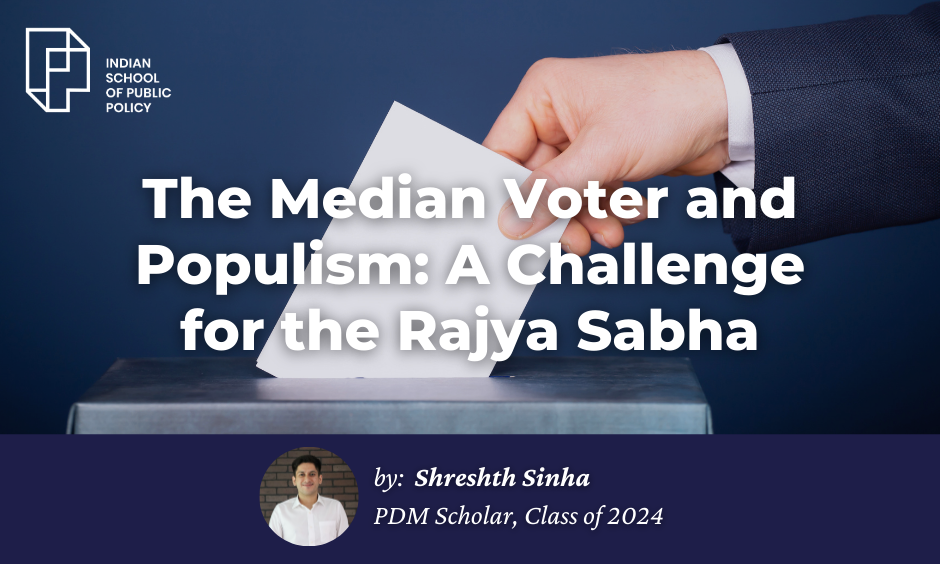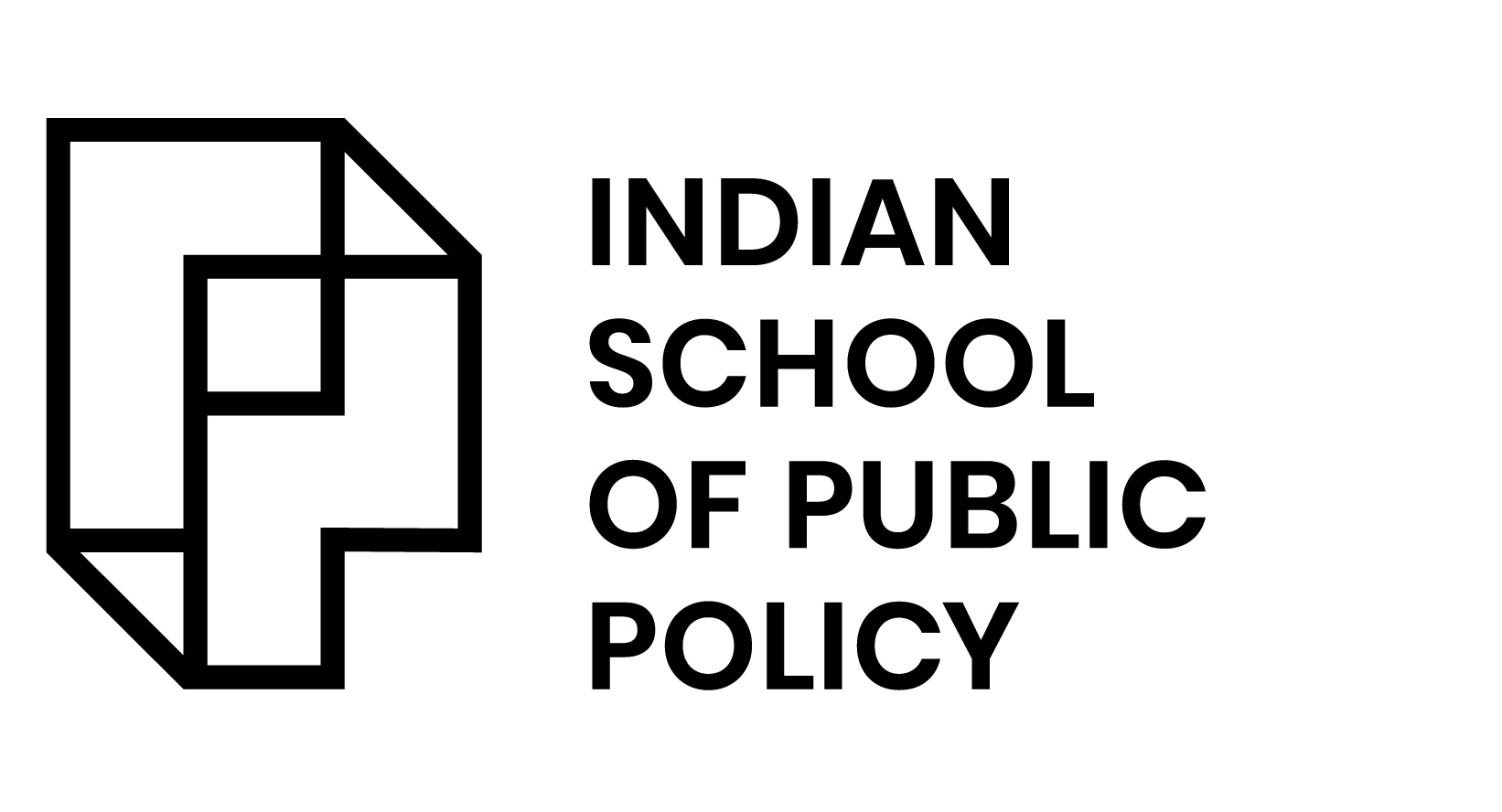
The Median Voter and Populism: A Challenge for the Rajya Sabha

A robust bicameral system is a crucial check and balance within a liberal democracy, fostering deliberation and preventing the rapid passage of poorly considered, populistic legislation. However, a weak upper house can undermine this safeguard, paving the way for policies that may not reflect the long-term interests of diverse groups within society.
Riker’s theory, mainly centred on the “median voter,” posits that in scenarios involving numerous actors with varied preferences, the decision-making outcome tends to favour the voters’ or groups’ preferences in the middle of the ideological spectrum. This pivotal median voter becomes a focal point around which coalitions are formed and compromises are negotiated.
When applying Riker’s theory to the Rajya Sabha, there is a potential for populism to gain traction when the median voter aligns with a populist agenda. Despite the diverse representation within the Rajya Sabha, if a substantial portion of the electorate holds populist views, the legislative body might find it challenging to resist populist measures due to the imperative of catering to the median voter’s preferences. The importance of institutional design emerges as a crucial factor in shaping the median voter’s preferences. Elements such as the electoral system, the composition of the Rajya Sabha, and its powers all play a role in influencing the median view within the chamber. Reforms aimed at ensuring fair representation and strengthening the Rajya Sabha’s capacity to scrutinise legislation hold the potential to shift the median voter towards positions less susceptible to populist manipulation. In this context, the structural aspects of the Rajya Sabha become pivotal in determining the overall trajectory of decision-making processes within the legislative body.
The Rajya Sabha, India’s upper house of parliament, stands at a crossroads. While envisioned as a guardian against populism and a champion of diverse interests, its evolution reveals inherent weaknesses that complicate its role in the face of contemporary political currents. This report delves into the intricate relationship between the Rajya Sabha and populism in India, outlining its strengths, weaknesses, and potential pathways towards a more robust and effective chamber.
The structure of the Rajya Sabha plays a crucial role in shaping the median voter’s views. The way members are elected impacts their representation. The indirect election system may favour dominant state parties, skewing the Senate’s ideological balance. Reforms ensuring fair representation could diversify preferences, moving the median voter from extreme positions. The composition of the Rajya Sabha reflects various states and interests. Strengthening representation through proportional systems could reduce the influence of a populist median voter, allowing for more nuanced decision-making. The Rajya Sabha’s limited power in financial matters hampers its ability to counter populist measures.
Granting it more authority over financial legislation, such as enhanced scrutiny or veto power over money bills, could empower it to resist short-term populist spending, prioritising long-term national interests.
Rajya Sabha embodied a commitment to balanced representation and federalism. Its indirect election system through state legislatures (Article 80) aimed to ensure regional voices were heard. However, this very design introduced its first hurdle: susceptibility to the dominance of powerful state parties.
While promoting proportional representation, the Single Transferable Vote (STV) system adds complexity, creating room for misinterpretations and potentially manipulative practices. Further complicating the picture is the phenomenon of “cross-voting,” where members deviate from party lines, leading to unpredictable outcomes and raising concerns about political horse-trading.
Despite these challenges, the Rajya Sabha has played a crucial role in safeguarding federalism. It serves as a platform for diverse perspectives, providing regional concerns and minority voices a space within the national discourse. The House acts as a “cooling chamber,” meticulously scrutinising legislation (Article 110) and preventing hasty decision-making that might disproportionately impact marginalised groups. However, its limited power over money bills restricts its influence in crucial financial matters, a sphere often exploited by populist agendas.
Dr. B.R. Ambedkar, the father of the Indian constitution, envisioned a far more robust Rajya Sabha. He saw it as a vigilant defender of minorities and marginalised groups, a staunch protector of federalism, and a crucial check against the “tyranny of the majority.” The reality falls short of this vision, with the Rajya Sabha’s effectiveness often hampered by inherent weaknesses. Electoral reforms aimed at ensuring transparency and fairness in elections could mitigate the influence of dominant parties. Exploring alternative voting systems that are simpler and less prone to manipulation could also enhance the integrity of the electoral process. Additionally, strengthening the Rajya Sabha’s constitutional powers, mainly its role in financial matters through reforms like granting veto power over money bills, could provide a more substantial counterweight to potential populist overreach.
The debate on bicameralism itself remains a subject of contention in India. While some advocate for strengthening the Rajya Sabha to fulfil Ambedkar’s vision and combat populism, others contend that a unicameral system might be more efficient and representative. However, this raises concerns about potentially exacerbating the dominance of majority rule. The future course of the Rajya Sabha hinges on carefully evaluating its strengths, weaknesses, and relevance in contemporary India. Addressing its current shortcomings while upholding its constitutional mandate is essential for ensuring a balanced and representative legislature, safeguarding federalism, and giving voice to diverse perspectives within the nation’s democratic ethos.
Register your Interest to Study at ISPP
References:
- William H. Riker, “The Theory of Political Coalitions” (1962)
- Rajya Sabha Secretariat, “Rajya Sabha: Complexity with Populism and Constitutional Mandates in Contemporary India” (2018)
- Zoya Hasan, “India’s Federal Dilemma: Political Decentralization and National Integration” (2000)

Shreshth Sinha
PDM Scholar, Class of 2024
A strategic and agile thinker who thrives to deal with ambiguous and complex problems and effectively communicate solutions. Shreshth is a graduate in the discipline of legal studies which has enabled him to understand processes of governance with regard to regulation and policy which has further helped him in actualizing solutions to the problems that lie at ground level. He is a policy enthusiast fascinated by the intersection of law, policy and governance and harbours keen interest in international relations, climate change advocacy and developmental economics.
https://www.linkedin.com/in/shreshth-sinha/


